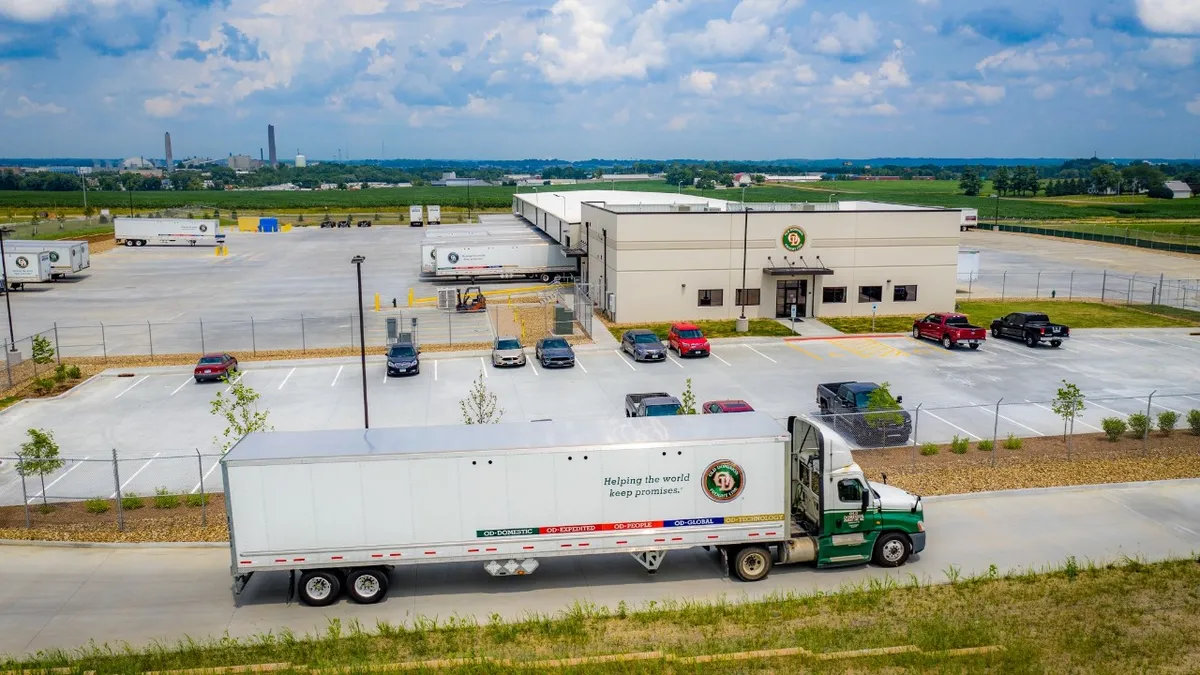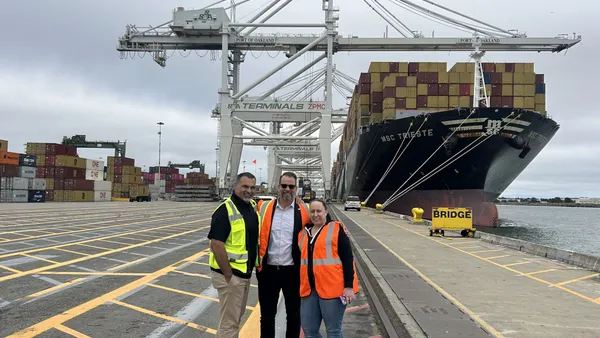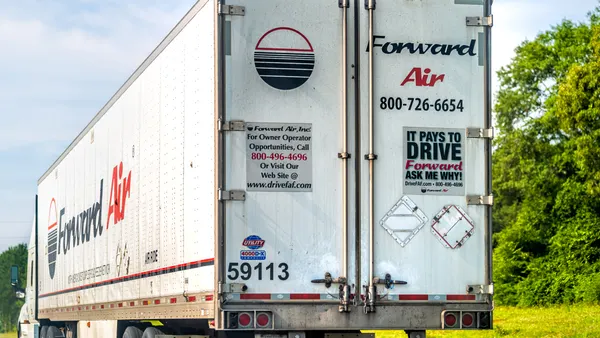Dive Brief:
- Old Dominion Freight Line is “effectively back” to its pre-pandemic tactic of fully insourcing its domestic linehaul operations, CFO Adam Satterfield said during a Q3 earnings call.
- The LTL carrier spent $34 million on purchased transportation last quarter, accounting for 2.1% of its revenue. It's a drop from the $43 million spent on the line item in Q2.
- Going forward, Satterfield said he does not expect the percentage figure to drop much further, as the company has historically spent between 2% to 2.5% of revenue on purchased transportation.
Third-party transport spend returns to pre-pandemic levels
Dive Insight:
Several factors drove the LTL’s increased reliance on outsourcing throughout the pandemic, according to Satterfield:
- Staffing and equipment. The industry faced a particularly tight hiring and purchasing environment in 2021. While Old Dominion staffed up that year, outsourcing helped supplement its efforts.
- Regional demand. When demand does not grow evenly across all regions, as occurred during the pandemic, it can throw fleets out of balance. Purchased transportation can help rebalance networks.
- Brokerage operations. Old Dominion maintains a small truckload brokerage and uses purchased transportation to support its Canada operations as well, which create baseline costs.
The LTL’s outsourcing spend rose sharply due to those factors, reaching a peak of $55 million in Q4 2021.
Old Dominion took several actions during the pandemic to help reverse the trend, though. The LTL hired thousands of drivers and added service centers to its network to bolster its capacity. Costs began to fall again in 2022 as the carrier leveraged its investments.
Outsourcing expenses balloon during the pandemic
“The stability of our workforce has also allowed us to reduce our utilization of third-party purchase transportation and moved closer to the fully in-sourced linehaul operation that we prefer,” Satterfield, who is also the company’s senior vice president of finance and assistant secretary, said in a July earnings call overviewing Q2 results.
Purchased transportation accounted for 2.55% of revenue in Q2 — still slightly over the company’s target — and Satterfield teased he believed costs could go down “a little bit more.”
By the October earnings call, the CFO shared regional demand trends were helping Old Dominion’s efforts.
“Most of our regions, you got some growing a little bit more than others,” Satterfield said. “But most are staying fairly balanced, which is a good thing. It's helped us be able to effectively reduce our purchase transportation, which was a positive for the third quarter.”
As a result, Old Dominion spent less on purchased transportation in Q3 than it has since Q4 2020.













